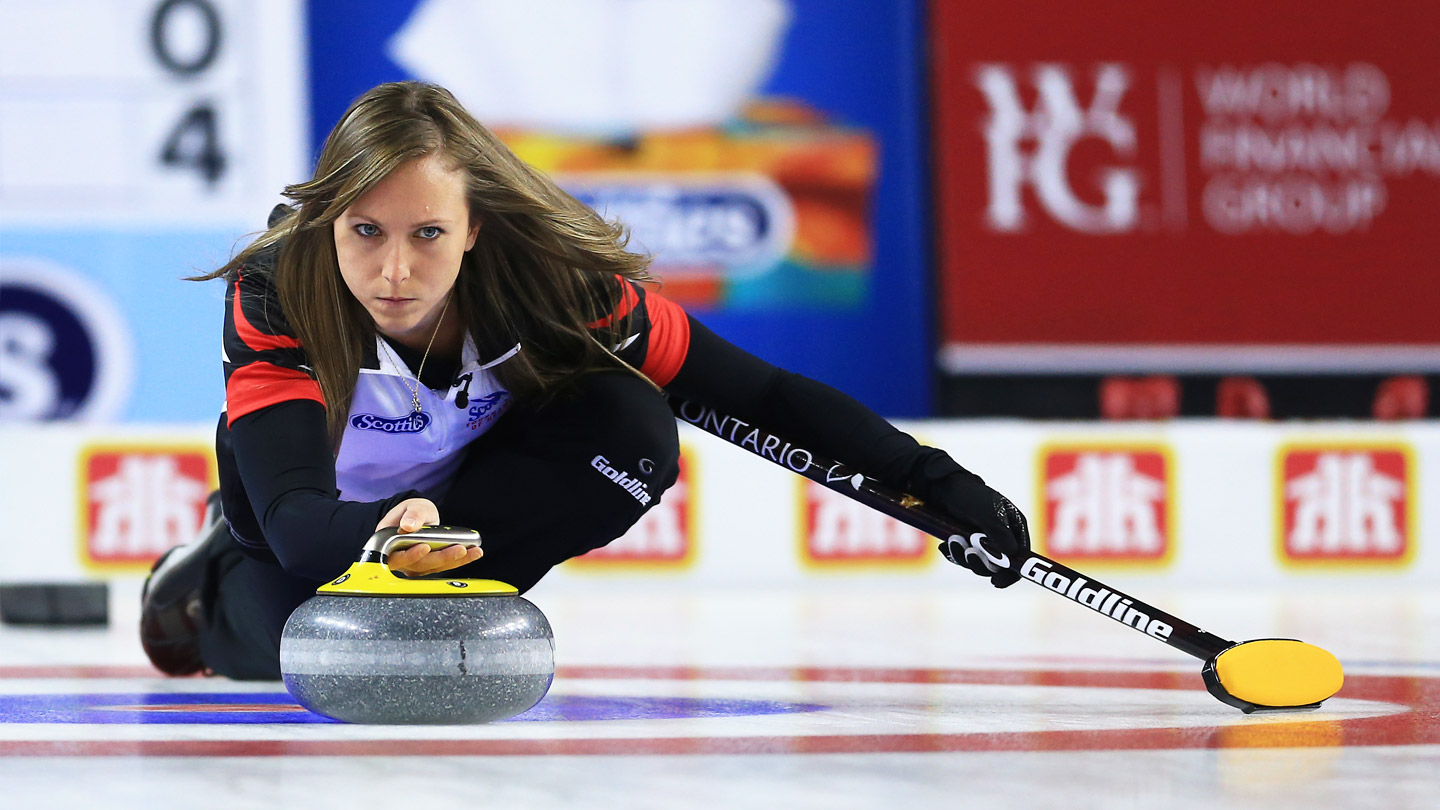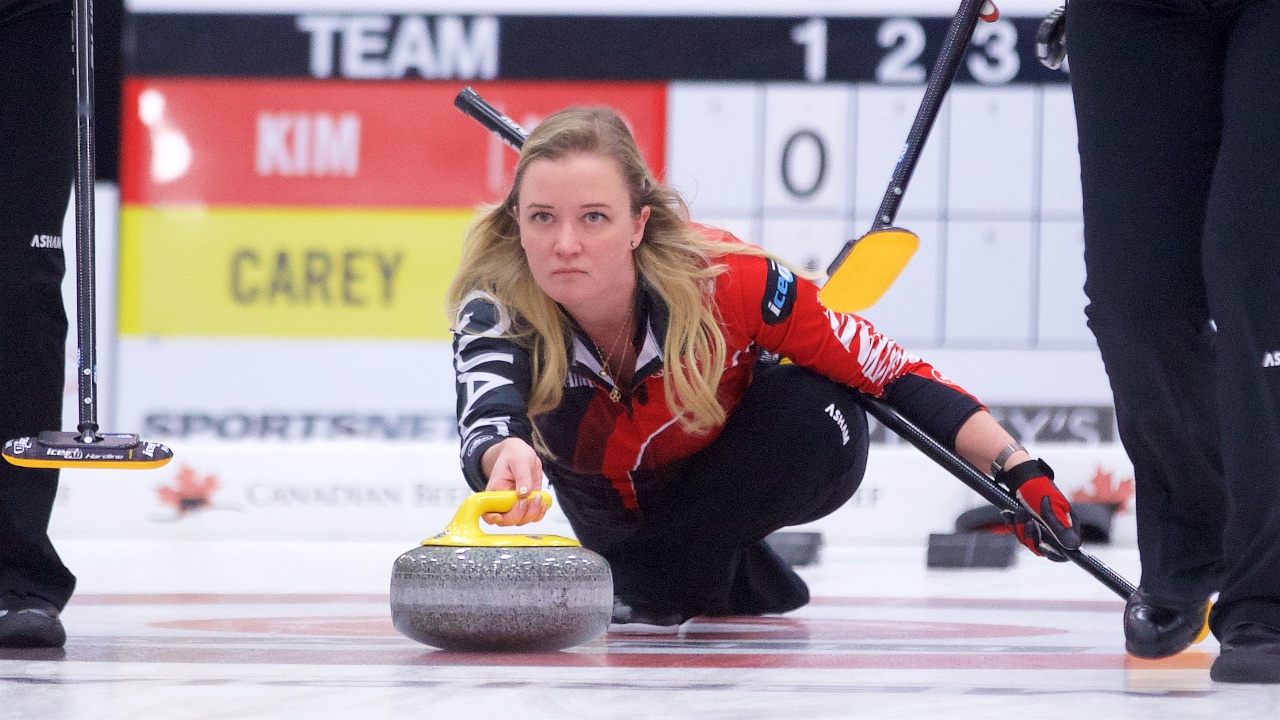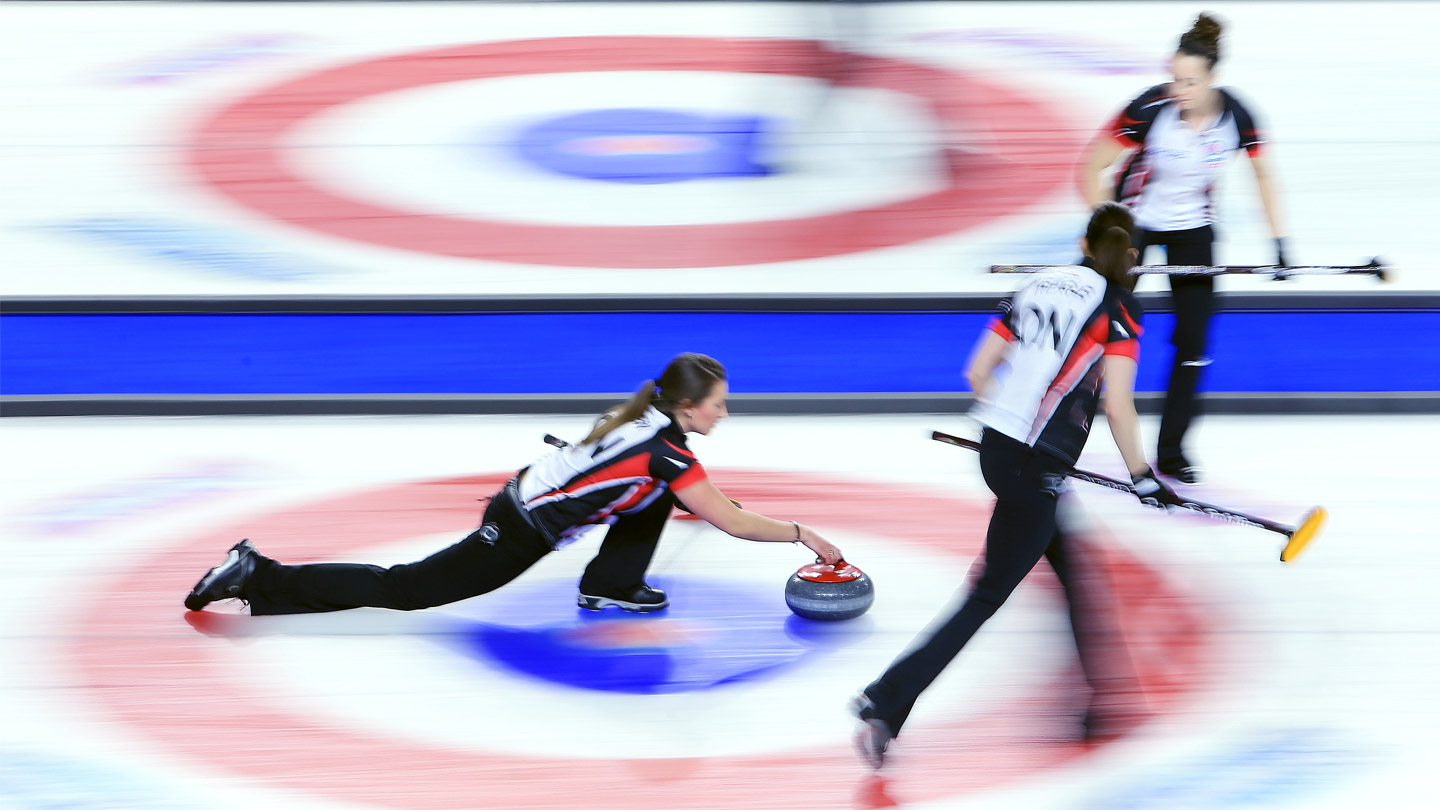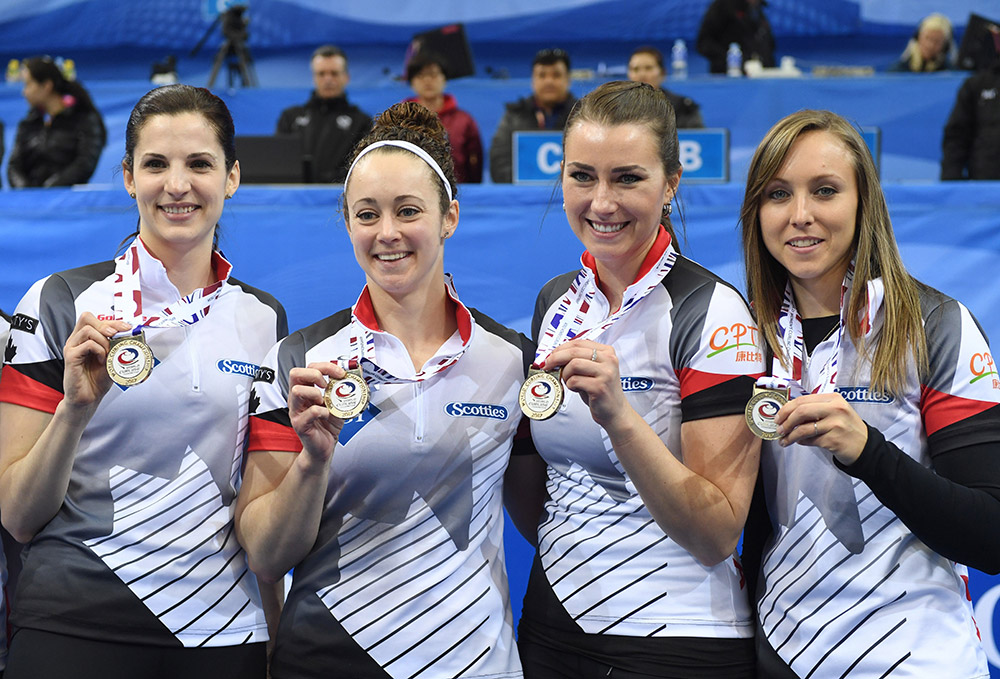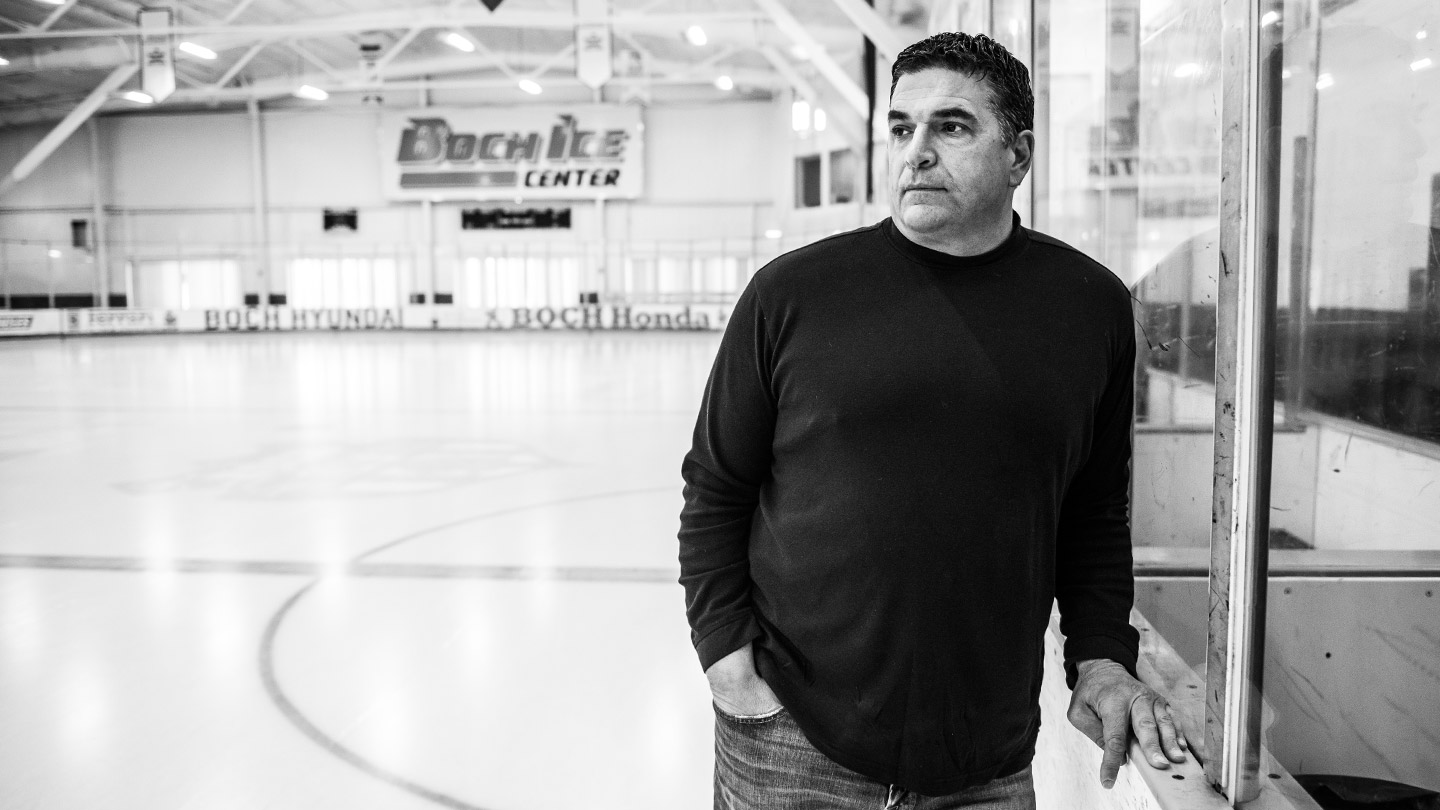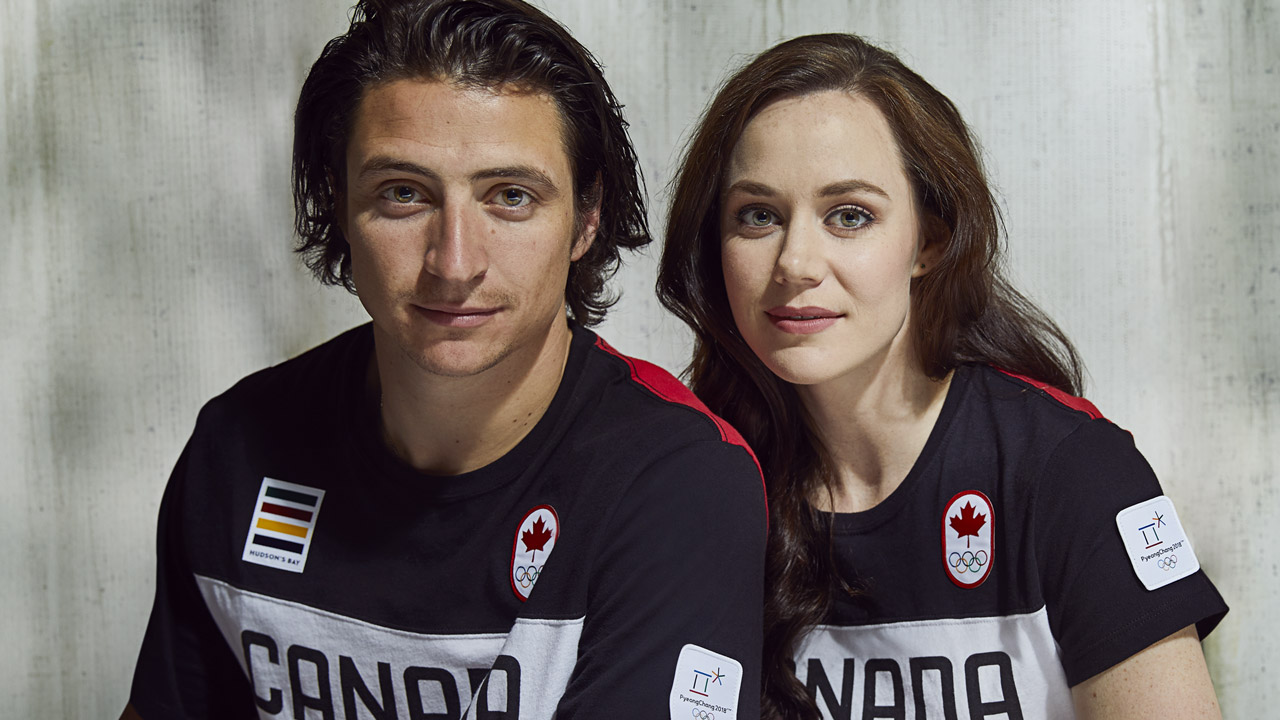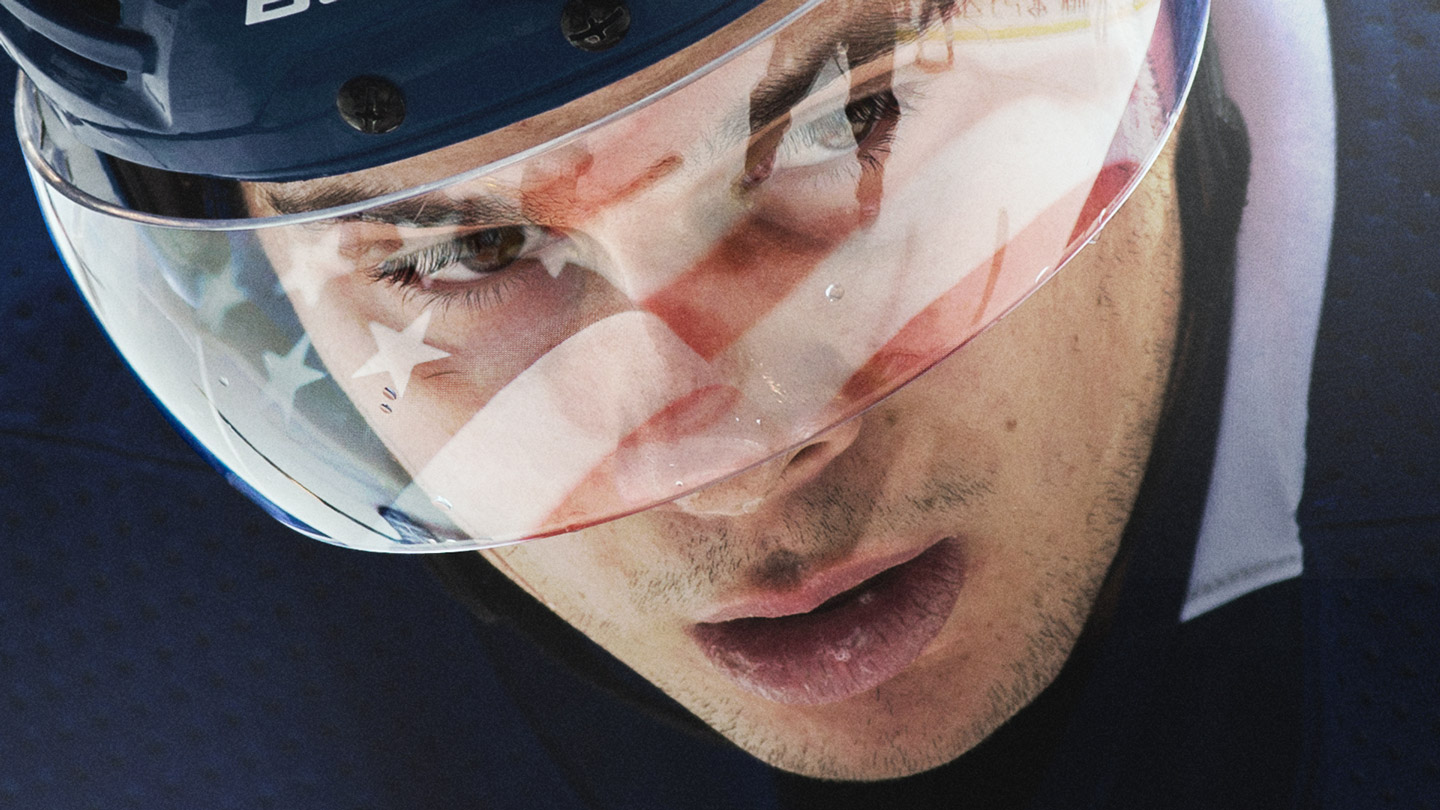Joanne Courtney is crying so hard that she needs to consciously slow down to catch her breath. The tears make it hard for her to talk, but she’s trying anyway. “I should stop crying in the next week or so,” the 28-year-old says with a laugh before the waterworks start up again. Homan is hugging her mom and her dad and her husband. Miskew is in tears, though she’s breathing normally, talking to media on the blue carpet at the Canadian Tire Centre. “We’re Olympians,” she says, grinning.
Weagle’s eyes have dried by now, some 20 minutes after the final rock was thrown at the 2017 Olympic trials. She works in communications for Sport Canada, but for the past year, the 32-year-old with the dark hair and big grin has been on unpaid leave to prepare for this moment. “The last trials were disappointing,” she says, “but I think losing them was probably the best thing that ever happened to us.”
After that semi-final loss at the Roar of the Rings in Winnipeg in 2013, which Jones’s rink won before going on an undefeated run to Olympic gold, Homan’s group reorganized. The change was in part because they wanted to spend the next four years working toward an Olympic berth, and in part because they had no choice: Long-time teammate Alison Kreviazuk, who’d been with Miskew and Homan most of the way since 2002, was leaving the team and moving to Sweden to be closer to her boyfriend.
Team Homan needed a second, and that’s when Courtney, more than 3,000 km away, heard her cell phone ring. “I don’t even know how she got my number,” Courtney says of her skip. “Rachel has her ways, you know?”
Courtney was then playing with her hometown rink, Team Sweeting, and in February of 2014 they’d lost to Homan in the Scotties final as the Ottawa team went undefeated to win a second straight Canadian title. A dialysis nurse who lives in Edmonton with her husband and dog, Courtney says the decision to switch teams wasn’t exactly made overnight, “but,” she continues, tilting her head and throwing up her hands, “it’s the type of opportunity I just couldn’t pass up.”



